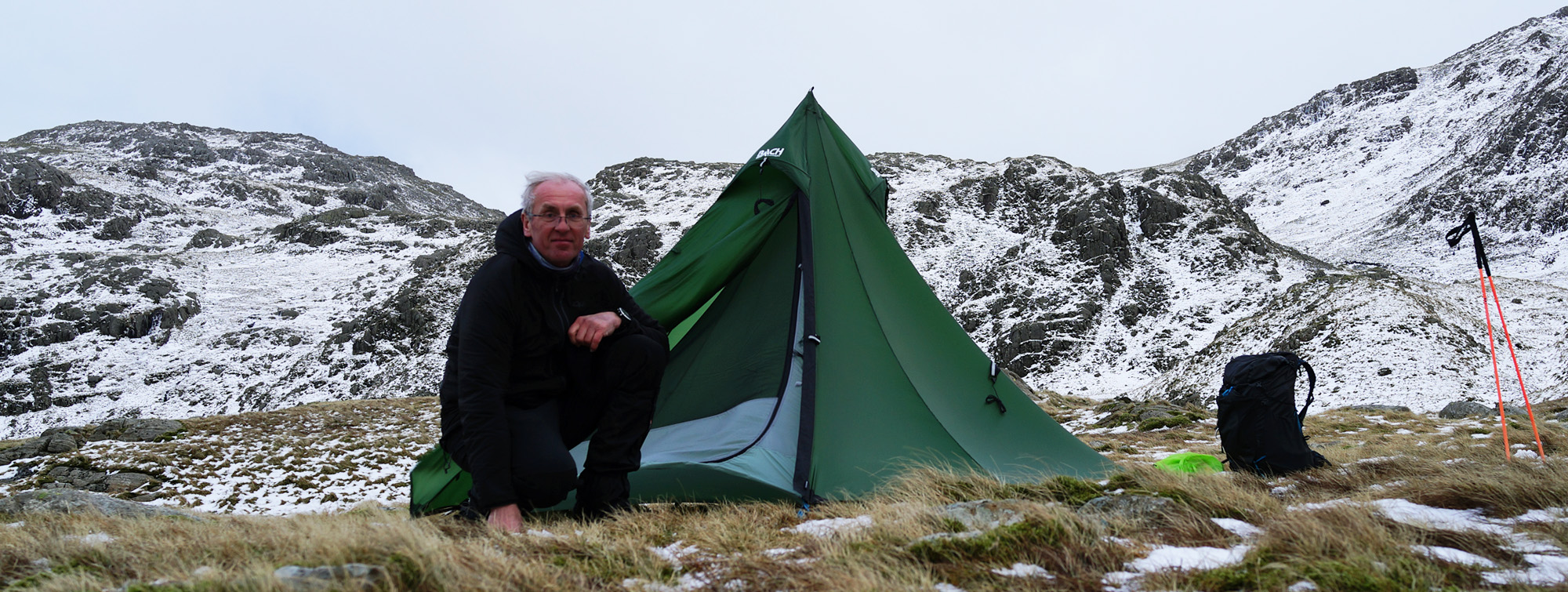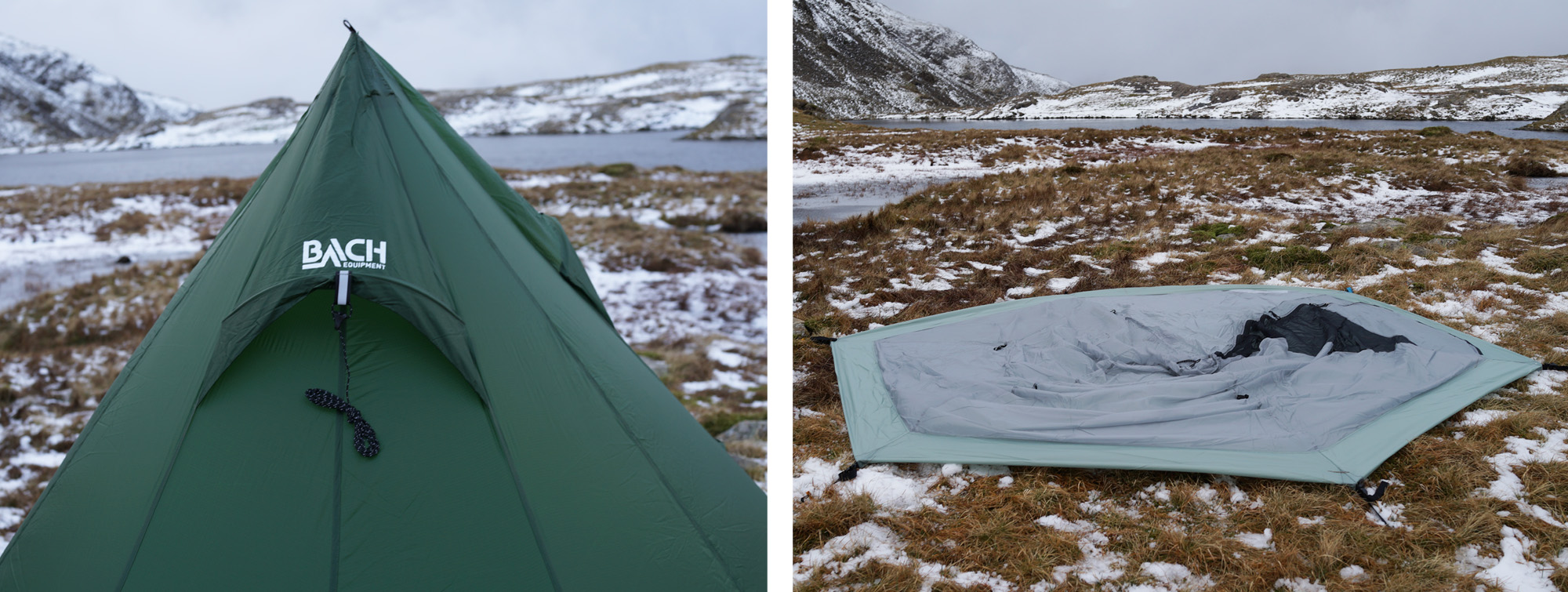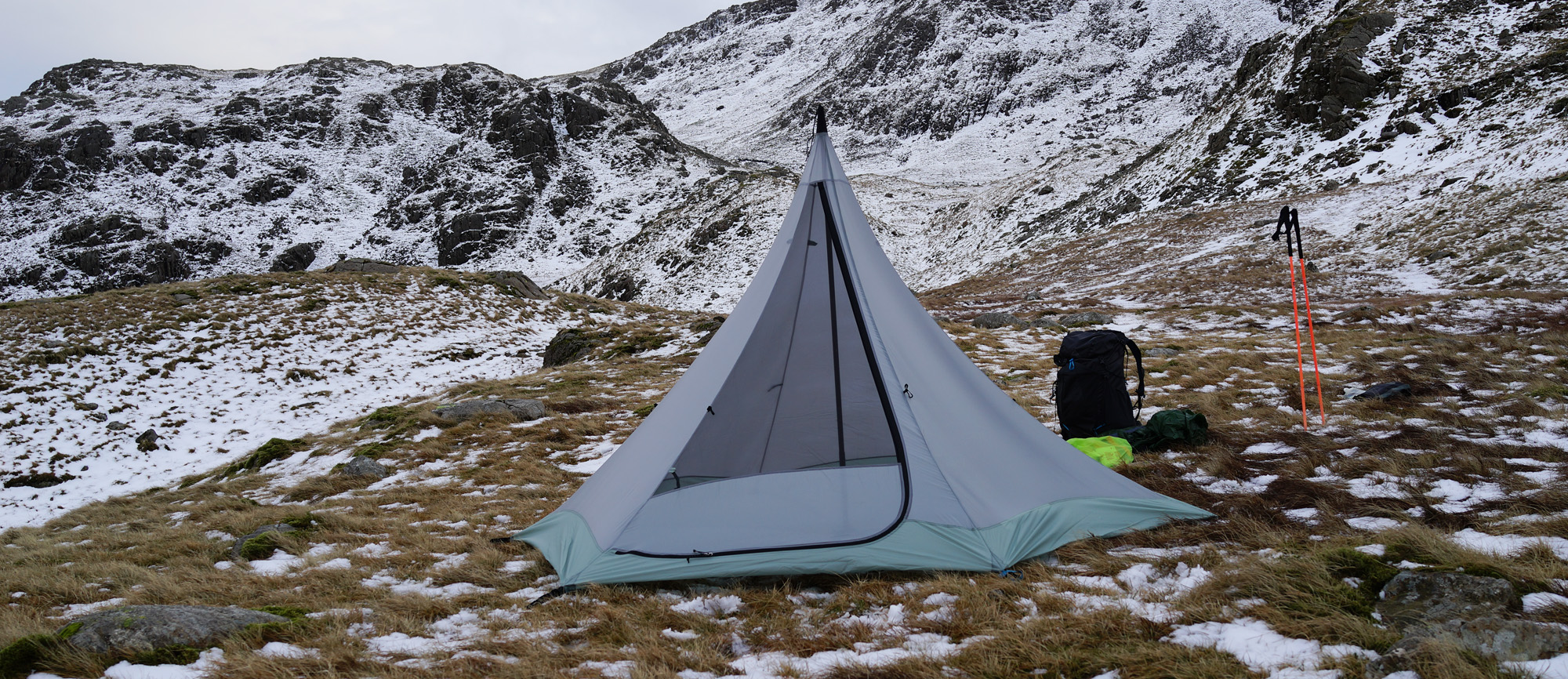Bach Wiki-up 3 Review - Ultralight Outdoor Gear
Posted by Mark Richardson on May 04, 2022

When Nigor folded as a company the product designs were taken up by Bach, already a well-known rucksack brand. Bach has taken the designs and added these largely unchanged shelters to its offering. A key USP for Nigor was the use of ‘Nylon 6.6’ as opposed to standard Nylon 6 used by most manufacturers and Bach has continued with this type of nylon. It is significantly better than the more commonly used Nylon 6 as it offers low creep, good stretch recovery and 33% higher abrasion resistance.
My first impression when removing the WikiUp 3 from its bag was quality and finish, the tent looks and feels excellent quality both in materials and construction. The design has been around for a while (even before Nigor started producing it) and has not changed much – a single pole in the centre supports a hexagonal pyramid and the inner tent mirrors the flysheet. It actually sheds wind and bad weather very effectively and what struck me about this one is the excellent separation between the inner tent and flysheet and anecdotally it seems better than I remember from previous incarnations. Although the tent sheds wind very well its tall and the fabric does blow ‘in’ when its gusty, as it was when I used it. There are extra pegging loops halfway up the main seams to counteract this, but the extra guylines and pegs you need are not included.
It pitches inner first (which not everyone likes) and you start by pegging out the six corners, my advice here is to extend the pegging loops to their maximum because when you add the flysheet this ensures that separation from the inner tent that I mentioned earlier.
Next the adjustable pole goes in at the maximum extension – this will not always be the same length because the ground will be different at each pitch. Then the flysheet goes on and you can connect the inner tent to the flysheet using clips midway up the main seams – these are useful because when you pitch out the extra guylines the inner volume is increased and is also more stable in windy conditions.
Internally the tent is luxurious for two but a squeeze for three I think, the best bit by far is the head height, getting up in the morning and putting clothes on is a much better experience for being able to stand up in the tent. This is quite a feat in a tent that weighs relatively little. Sitting around in the tent is comfortable too.
There have always been some short-comings of the design: at the edges of the groundsheet there’s no headroom, which is where your head ends up when you are lying down, also there’s no porch, the inner tent fills the whole of the flysheet – worse when you open the door if it’s raining its impossible not to let some of the rain into the tent itself.

The lack of a porch means you have to have some solution for your kit – a lot of it will come inside with you but boots won’t and you probably don’t want water bottles, cooking gear and trekking poles etc. Years ago I used to always carry a waterproof bag to put my rucksack in once it was empty which I left outside of the tent – nowadays it goes in the porch, but the bag could be a solution for the WikiUp. It’s not a terrible issue – I managed to leave my boots protected under the edge of the flysheet and they didn’t come to any harm.
Bach do a half size inner tent which eliminates these drawbacks, but only if you are using it for solo use or two very good friends. More about the half-inner later.
Bach only supplies 12 pegs with the tent and in order to pitch it using all of its pegging loops you need another 9, and this assumes (reasonably) that you are using one peg for both the flysheet and groundsheet corners.
Weight Options
One of the reasons this tent design is so popular is the weight for a given volume, even 2 people carrying the
WikiUp 3 would be carrying less than a kilogram each for a tent you can stand up in. Not only that its very tough, has a really heavy duty 40d groundsheet with a 10,000mm hydrostatic head value, so anyone who worries about how flimsy an ultralight groundsheet is would find this a better option.
Most backpackers these days use trekking poles, and with a bit of diy, or purchase of a gismo, two trekking poles can be fixed together to become one, thus saving around 300grams. The overall weight then becomes 1577grams.
I mentioned the half size inner tent, which reasonably is for solo use, this weighs 512grams versus the 772grams of the full inner. This would mean the version of this tent for solo use, without the drawbacks of no porch and a rain-unfriendly doorway, and using trekking poles to support it – would weigh just 1271grams plus the weight of the gismo to join your poles together.
That is an amazing weight for such a versatile, durable and robust shelter with room to stand up in and what amounts to a huge porch which you can use for storage, getting out of wet gear plus many other camp related activity.
In Summary
The Wiki-Up 3 is a durable, strong, weather shedding lightweight shelter that you can stand up in. Its most suitable for two people but it will take 3. With the solo ‘half’ inner tent and trekking pole pitching options it becomes an amazingly versatile shelter for one person with a minimal weight penalty given the advantages.
We like it!


|
||
 |
||
|
Mark Richardson |
||
|
Mark was the founder of Ultralight Outdoor Gear back in 2006 and has completed long distance backpacking routes in some of the remotest parts of the world. His favourite hikes have been Torres del Paine (full circuit), the John Muir trail and the Markha Valley trail (Ladakh, India). Although semi-retired Mark has not lost any enthusiasm for minimalist backpacking and is tackling Scotland’s Munros choosing multi-day backpacking routes over the more usual guide book excursions. |
||
